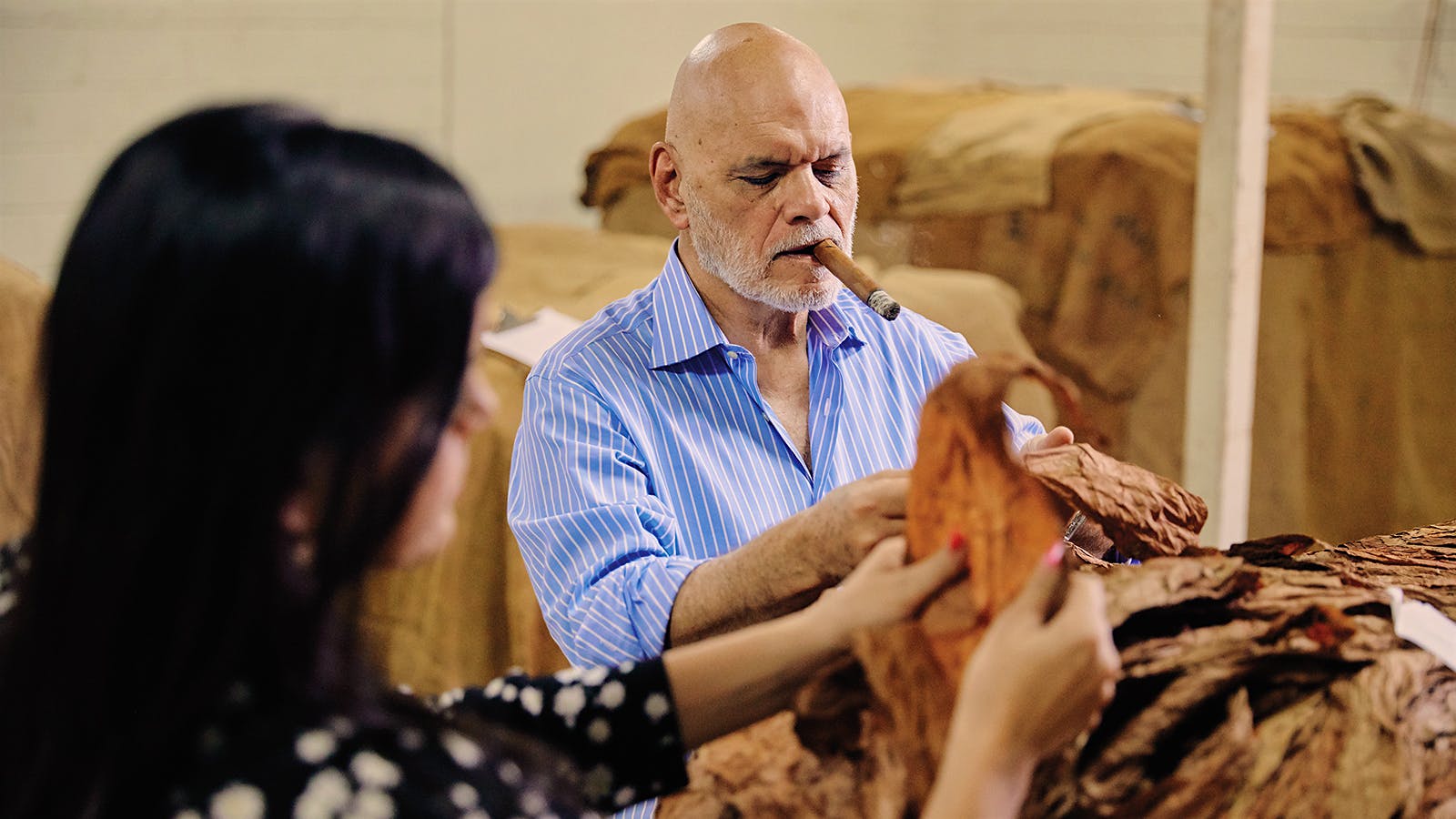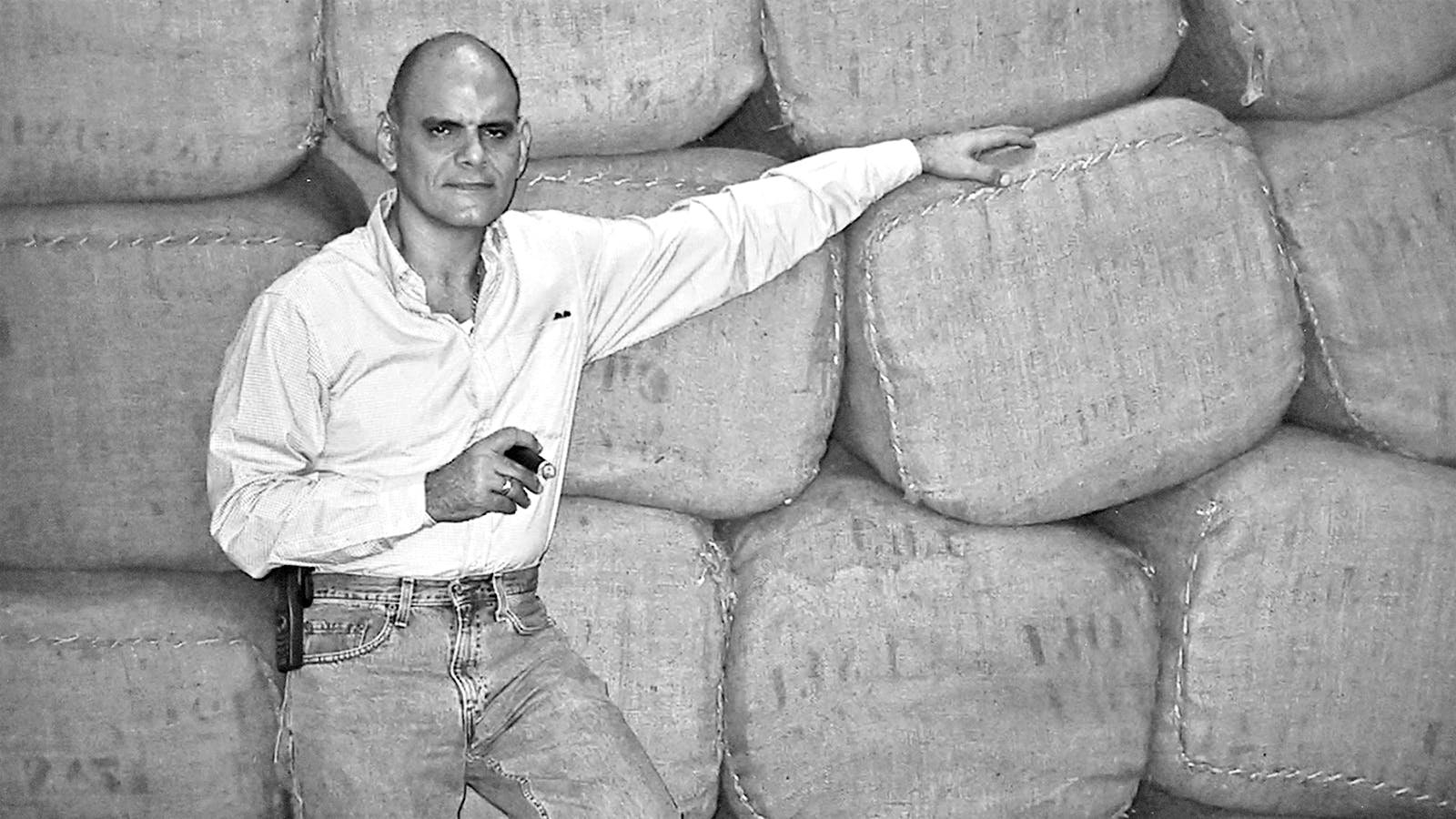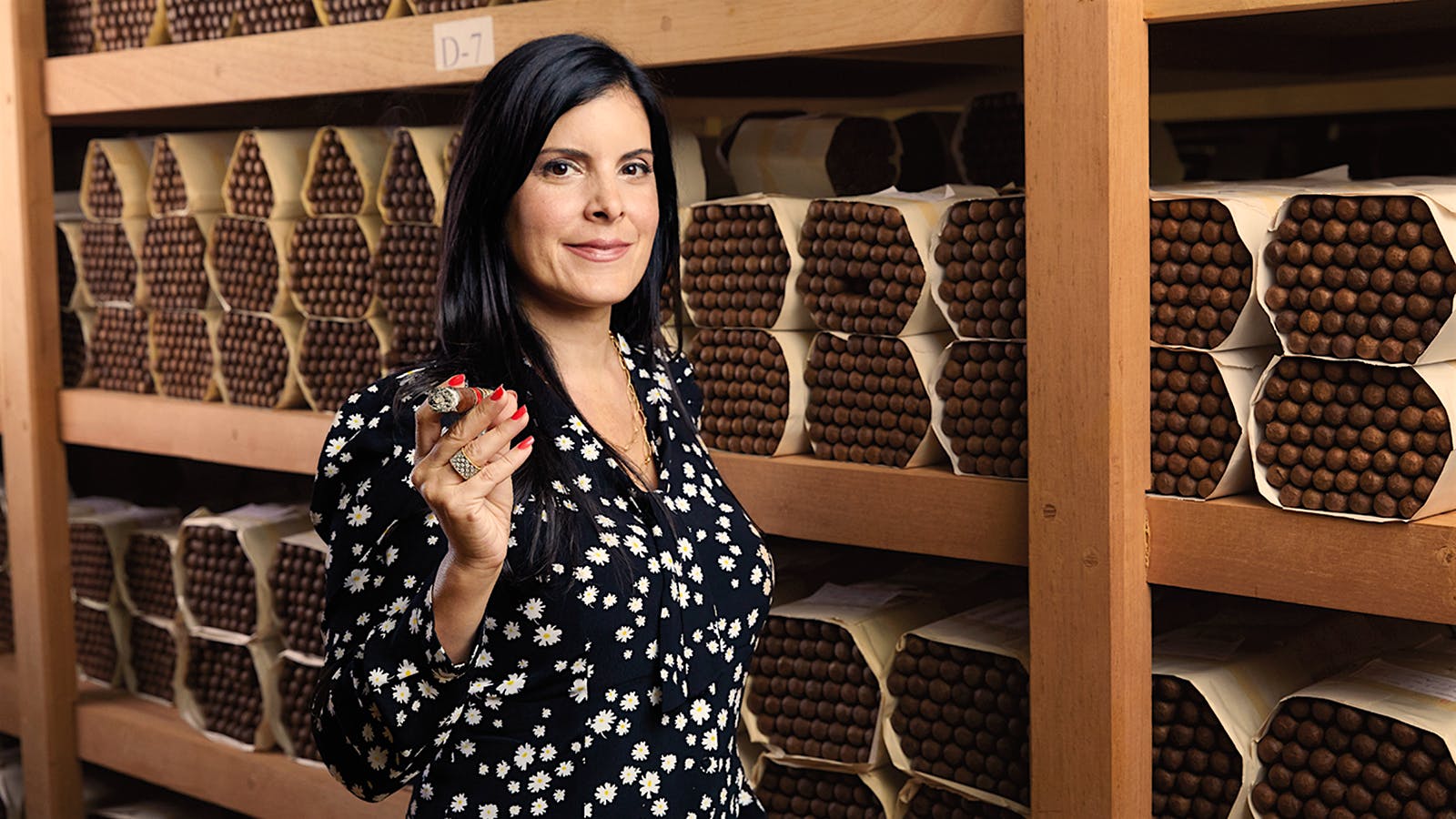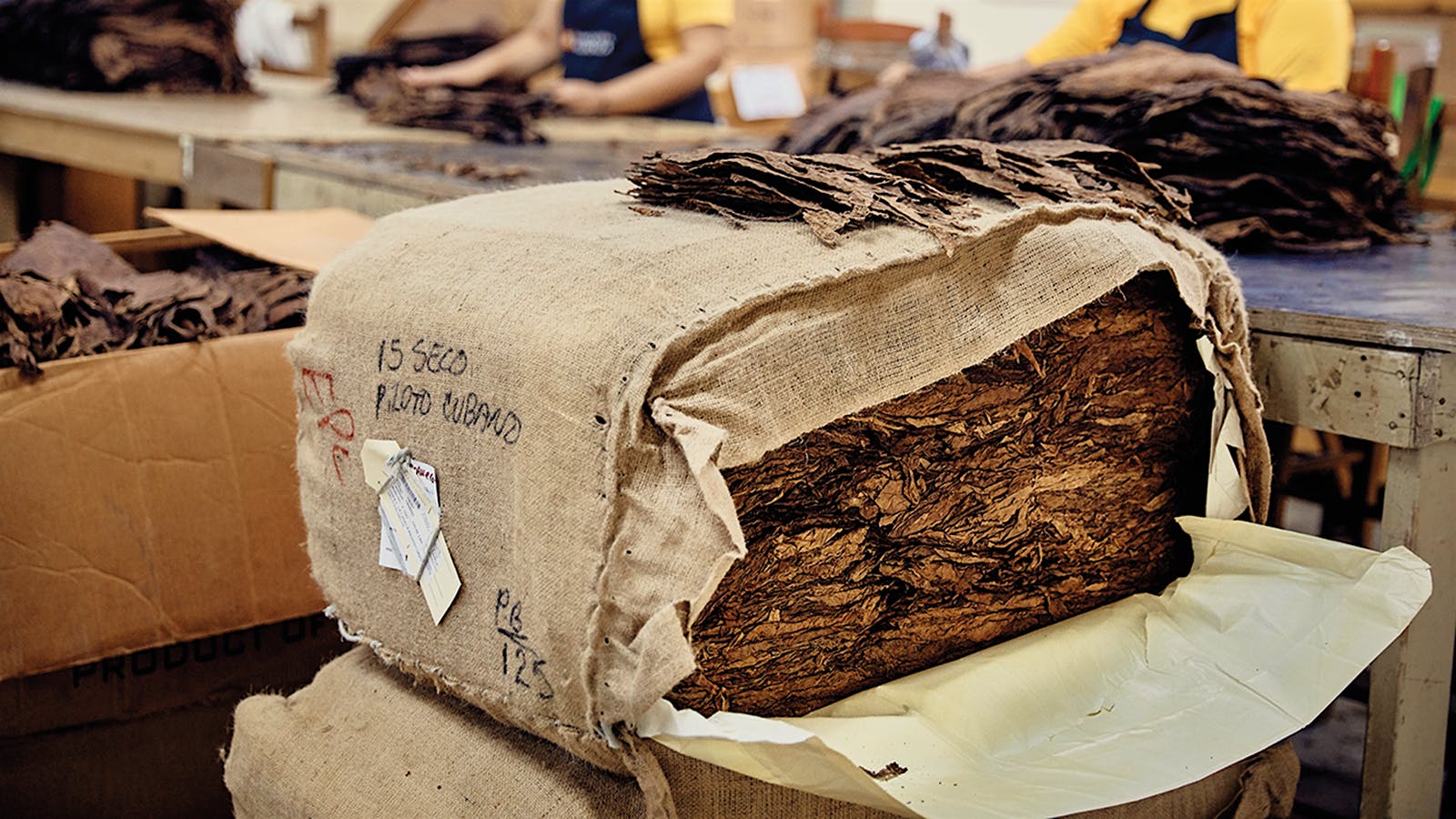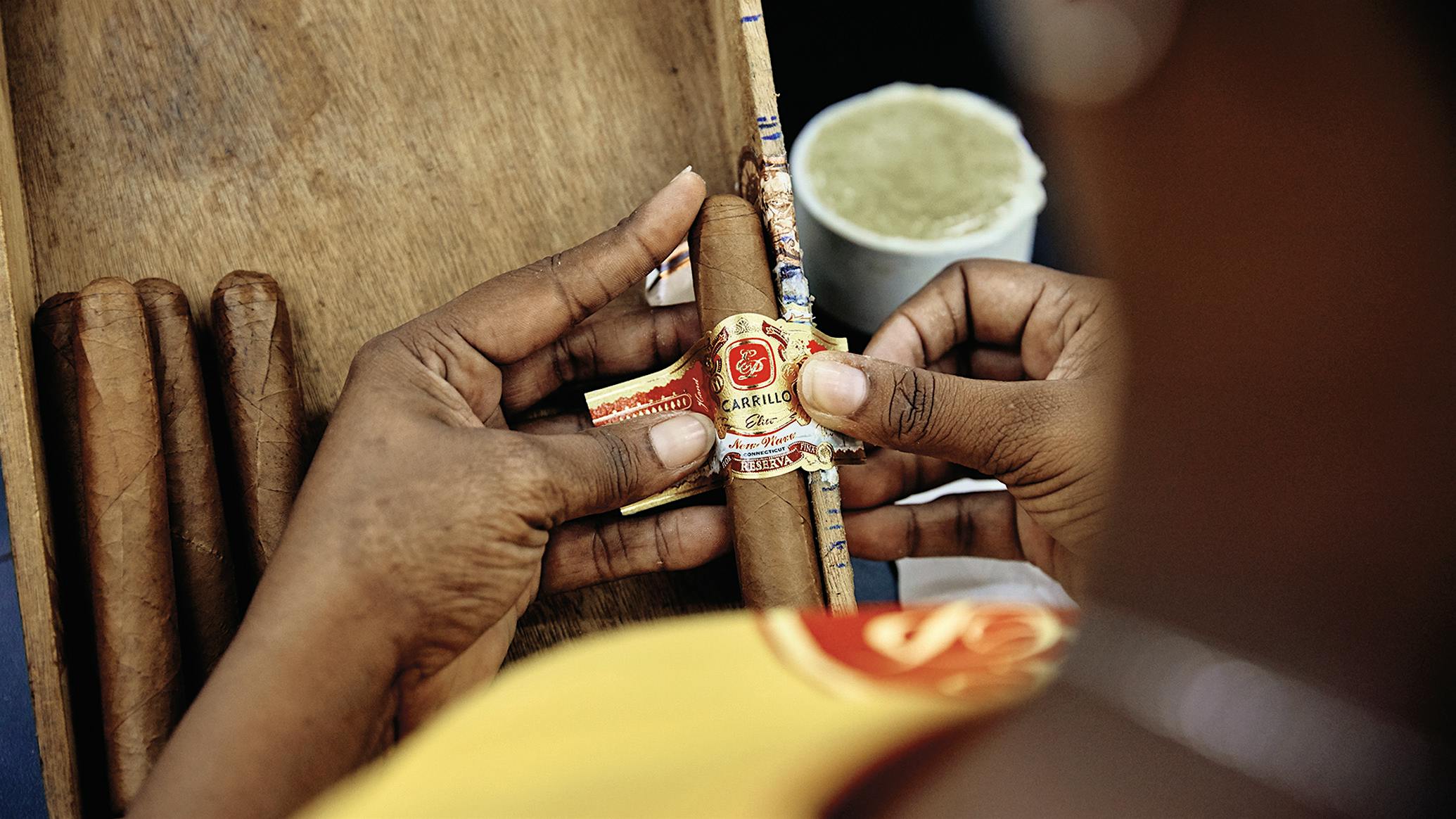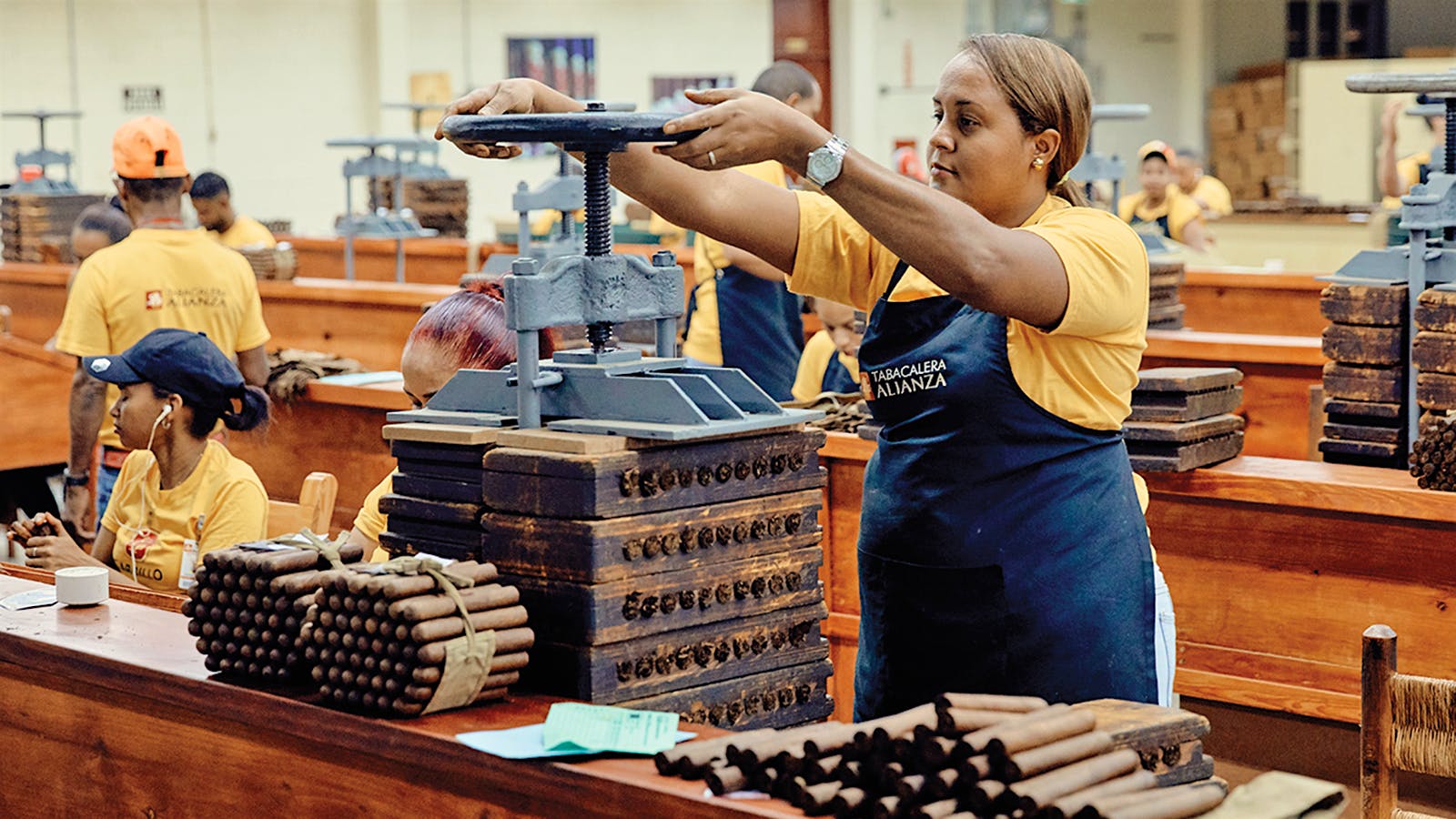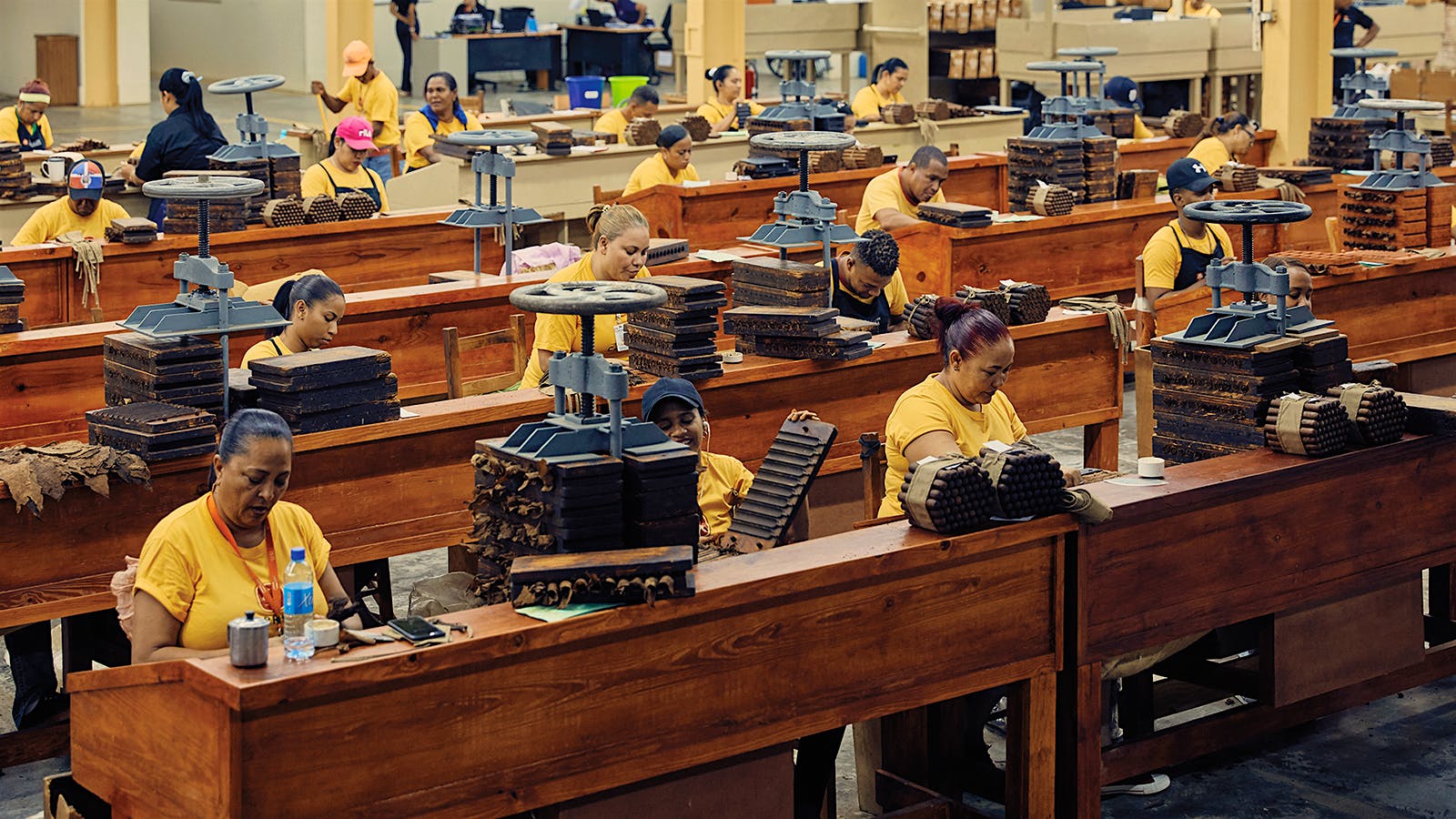An Earnest 50 Years
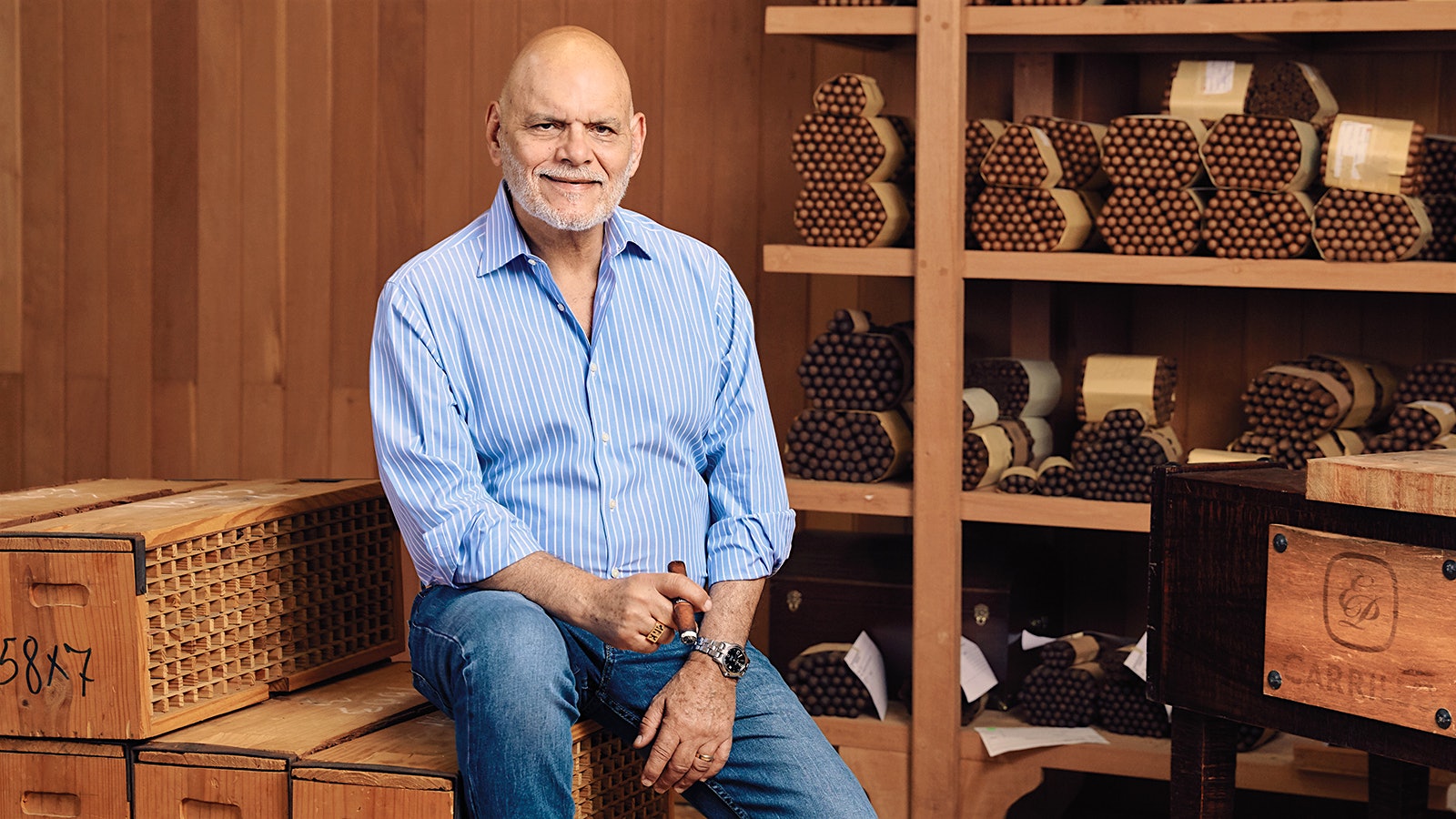
Ernesto Perez-Carrillo Jr. has every right to be cocky. After five decades in the cigar business, his name resonates throughout the industry as a beloved, well-respected figure whose distinguished career lead him, in 2018, to the highest award any cigarmaker can receive—Cigar Aficionado’s Cigar of the Year. He’s also been inducted into the Cigar Aficionado Hall of Fame, turned a local Miami cigar into a national brand and continues to produce cigars at his own factory on his own terms in the Dominican Republic. Of course, he isn’t cocky at all. Fifty years of toil seems to have had the opposite effect. Despite his enviable resume of achievement, he’s one of the nicest guys in the industry. So what does the guy who’s done it all do next?
“I just want to be able to share what I know with whoever wants to listen to me,” Perez-Carrillo says in his unmistakable Miami-Cuban accent. He left Cuba when he was only seven years old (and hasn’t been back since) but the subtle cadence of his birth country will be with him for life.
On a hot August afternoon, with the country still trying to fend off the ill-effects of Coronavirus, the 68-year-old communicates virtually, on-screen through a digital Zoom meeting from his home in Miami. Even for those who struggle with technology, digital communication has become the new normal and, like the rest of us, Perez-Carrillo has no choice but to embrace it, or become a hermit under house arrest.
“I haven’t been in the factory since March,” he says of his La Alianza facility in the Dominican Republic, where all of his cigars are rolled. “We closed on March 19 and reopened May 29. People came in every once in a while to turn the tobacco and check on the fermentation process, but other than that, there was no production until May.”
The Zoom call catches him in one of the rare moments of the day where he’s not smoking a cigar. He stares off for a moment searching for the right words to sum up five decades as succinctly as possible and then looks back into the screen.
“I’ve achieved so much without ever really looking for it,” he says, though he seems unsatisfied with the statement. “None of it was planned out. It just happened day by day. My methods of blending and the way I use tobaccos shouldn’t be kept a secret. In the long-term, all of us have to share as much as we can of what we know. There isn’t a university or a book. It’s only learned through many years of experience.”
The totality of that experience can best be summed up as the American Dream, played out in three acts: Starting out in Miami in 1970 with his father. Working for General Cigar in 1999. And leaving General 10 years later to start over on his own again. If you’ve followed his career over the decades, or maybe bumped into him at a cigar event, then you might be familiar with some of the backstory.
Perez-Carrillo’s father was a senator in Cuba from 1954 to 1958, and represented Pinar del Río, the fertile region in the west known for growing tobacco. Before his days in politics, Ernesto Perez-Carrillo Sr. earned a living as a purchasing agent for a tobacco broker back when free enterprise was still legal in the country. He also grew wrapper in San Cristóbal, a region roughly midway between Havana and Pinar del Río. Most of that tobacco was candela, as this type of green leaf was popular at the time.
As with many family histories, exact dates are a little murky, but Perez-Carrillo believes his father purchased the El Credito cigar factory in Havana in 1948 and owned it even during his time as a senator. Sadly, documentation regarding the old factory was left behind in Cuba, and online searches for El Credito in Havana turn up next-to nothing.
Castro’s Revolution was already under way during Perez-Carrillo Sr.’s time on the senate, and by 1959—once Castro overthrew Batista’s government—Perez-Carrillo Sr. instantly became a suspicious remnant of the old regime. Naturally, this made him a target for political persecution, so he joined the first wave of mass emigration from Cuba and ended up, like so many Cuban exiles, in Miami. None of his money came with him.
By 1968, after odd jobs in the restaurant industry, he decided to rekindle his career in tobacco and opened up a chinchale—Cuban slang for a little cigar factory. The modest operation on Calle Ocho, in the heart of Miami’s Little Havana neighborhood, was named El Credito after his former factory in Cuba, and became one of many small cigar factories in the area making smokes for Miami’s growing population of Cuban expats.
“The business was really struggling from 1968 to 1992,” Perez-Carrillo recalls. He started working alongside his father part-time in 1970 and was only half-interested in the business. As a young man, Perez-Carrillo had starry-eyed aspirations of becoming a professional drummer.
“We’d sell cigars for 20 or 30 cents apiece. You can’t make money like that. Not in those days. The business was very centralized, so it didn’t look like it was ever going to grow.”
Things picked up a bit when El Credito began making a non-Cuban version of the La Gloria Cubana brand in 1974. According to Perez-Carrillo, his father had purchased the rights to La Gloria while still in Cuba, although he never produced it until coming to the U.S. Compared to big names like Partagás or Montecristo, La Gloria Cubana was virtually unknown, and early versions of the Miami-made cigar didn’t even use the original artwork, so there was very little connection to the Cuban brand.
Business plodded and life was lean. Fairly uneventful too, until one odd day in 1976, when his father got an unusual offer from Royal Jamaica, and its owners, the Gore family. The way Perez-Carrillo tells the story, Royal Jamaica offered his father $125,000 for the entire company. The U.S. was just coming out of a recession and a six-figure sum seemed a godsend for such a modest, even stagnant, business.
“The two [Gore] brothers came down to Miami, and offered to buy the company,” he recalls. “It was a lot of money for the time. The fact that my father asked me to come down with him and meet with these guys—I think he wanted me to make the decision for him. I said ‘don’t sell it.’ He turned down the offer because I asked him to. I think that says a lot. It was a commitment on my part to run the company for the future.”
In the next few years, things changed at the small Miami factory. Perez-Carrillo’s father developed ALS (Lou Gehrig’s disease) and passed away in 1980, putting the reigns of El Credito in his hands. He also decided to change the packaging of La Gloria and started to use the original Cuban artwork.
“There was an exposition at the Miami public library and I saw the original packaging from Cuba,” Perez-Carrillo recalls. “Before, it was a regular wooden box with a white and green label.”
Eventually, he changed the blend as well. “I used my dad’s blend until 1990.” The new blend consisted of an Ecuador Sumatra wrapper and Nicaraguan binder that enveloped filler from both Nicaragua and the Dominican Republic. And with the eye-catching artwork depicting an allegorical female figure of “glory,” the brand now had some polish and historical context.
Growth was steady but sluggish, and exposure was limited. The lack of any major cigar publication didn’t help things. Social media didn’t exist, so without huge advertising budgets for billboards or newspapers, a small cigar operation had only word of mouth to rely on. There was very little scholarship on the cigar industry, and the entire concept of major cigar media was nonexistent until 1992, when Cigar Aficionado first went into circulation.
In the fall issue of that year, a 90-point rating for the La Gloria Cubana Wavell brought national attention to the brand and created a demand for La Gloria that Perez-Carrillo would have never thought possible. On the day the rating was released, Perez-Carrillo was at the annual PCA cigar trade show—then called the RTDA—and it was like winning the lottery.
“When I used to go to those RTDA shows, if I sold 600 cigars, I’d be happy,” he said in a previous interview with Cigar Aficionado. “I remember the times we’d go to RTDA and come back with orders for 400, 500 cigars. When we got rated in that issue, we got orders in one day for 26,000 cigars. In one day. Then, the phone calls into Miami were tremendous. We had to put in an answering service. One time we got like 170 calls a day. Who could answer those calls? It was incredible. And that’s really when the brand became known nationally and worldwide.”
Perhaps lottery isn’t a perfect analogy. It was certainly an unexpected bit of news, and the intense, immediate uptick in demand was a thrill that Perez-Carrillo had never experienced, but the ratings are based on merit, not chance, and the cigar was a winning blend deserving of recognition. Luck or not, nothing was the same after that rating was published, and with this overnight explosion, the business started growing at a pace that was difficult to manage. It was a euphoric, yet hectic time.
Exacerbated by the cigar boom of the ’90s, the unprecedented demand now posed a new set of challenges. Production couldn’t meet demand and frustrated retailers were waitlisted. The only solution was expansion, and, by 1996, Perez-Carrillo opened a factory in the Dominican Republic. Some diehard fans insisted that the Miami-made La Glorias were superior—a belief that persists to this day—but Perez-Carrillo assures that the blends were the same.
In 1997, El Credito produced 1.2 million cigars in Miami and around six million in the Dominican factory, most of which were La Gloria Cubana. Part of the production was another brand called El Rico Habano.
Now that Perez-Carrillo was a formidable player in the industry, someone came knocking on his door looking to buy him out again. This time, it was cigar giant General Cigar Co. Not only did they want his La Gloria brand, they wanted his expertise as well. Unlike the offer with Royal Jamaica, Perez-Carrillo accepted. In 1997, he sold everything to General—the Dominican factory, the shop in Miami, and, most importantly, the La Gloria Cubana brand that he built. Plus, he agreed to be a salaried employee of General, although the dollar amount of the whole transaction was never disclosed.
“Part of the deal was that the amount paid was never to be revealed by either party,” he says. When asked if it was at least more than the $125,000 offered 20 years prior, Perez-Carrillo simply laughs.
The next 10 years were spent developing La Gloria for General and acting as an ambassador for the brand. Under General, he further expanded the La Gloria Cubana Serie R, a stronger, fatter line extension with 20 percent more ligero in the blend than the core line. Serie R was conceived in two sizes while Perez-Carrillo was still independent, but once he worked for General, he came out with two massive additions, one at a 58 ring gauge and one in a 60. The cigar-smoking public loved them and this release is most likely what signaled the fat ring gauge trend we see today, as it normalized massive cigars through a respected brand and sparked a national appetite for gargantuan smokes. It also earned him the unofficial title: “The Godfather of Large Ring Gauge Cigars,” a name he accepts with a chuckle. But despite detractors of 60-plus ring gauge stogies, he’s unapologetic about perpetuating the huge format and defends it pragmatically.
“With big ring gauges, you can experiment with more tobacco,” he explains. “If you’re making a robusto, you’re talking about three leaves, plus wrapper and binder. When you’re talking about a 6 by 60 you can add more leaves, up to six different tobaccos.”
After 10 years with General, Perez-Carrillo left the corporation and decided to start over in the cigar world as an independent. This time, he brought his kids into the business. Feeling like he had to reinvent himself, Perez-Carrillo was about to start a chapter in the cigar business without the La Gloria brand. The divorce was strange, as both he and La Gloria had been inextricably linked for more than 20 years, but, emotionally, Perez-Carrillo was ready to let it go.
“I’ll always feel connected to La Gloria,” he admits. “It gave us so much as far as notoriety and being known as a national brand. But I think a lot of people thought I was going to come out with another La Gloria when I started on my own again. I wanted to make a statement: Forget about La Gloria. I’m doing something different now. And I made a cigar that was completely different, the Inaugural. A lot of people were disappointed.”
He’s talking about the E.P. Carrillo Edicíon Inaugural, a cigar that came out in December of 2009 in one size called the Encore. It was the first cigar to come out of his new La Alianza factory in the Dominican Republic. The brand was a critical success (91 points, Cigar Insider), but a bit of a commercial flop. The cigar didn’t taste like La Gloria, and it didn’t look like La Gloria. If you recall EPC’s bands and boxes of 10 years ago, they didn’t look like anything that ever came out of El Credito or General. That’s because Perez-Carrillo did something uncommon in the premium cigar world by hiring a New York City ad agency to create the packaging.
“That was Ernie’s idea,” he says, referring to his son, Ernesto Perez-Carrillo III. “It was a great experience. In the beginning, it helped us define what we wanted to do. We used them for the first year, and then we built on what they came up with. We couldn’t hang on to them for too long because of what it was costing us, but it set us in a good direction.”
With the input of his son and daughter, Lissette, who handles the marketing, financial and legal aspects of the company, Perez-Carrillo is back with family, though Ernie is far less hands on and serves more of a consulting role.
“Ernie is part owner of the company and is up-to-date as to what’s happening,” Perez-Carrillo explains. “He has some very good insights as to just running the business in general. Lissette is running the marketing, the social media and takes care of the legal issues with the FDA. I don’t see how we could have gone through all this legal stuff without her.”
Part of Perez-Carrillo’s new chapter was taking on a third-party contract brand. Now called EPC Cigar Co., it produces a good portion of cigars for Crowned Heads, a Tennessee-based company run by Jon Huber and Mike Conder.
“I remember reading about Ernesto and his La Gloria Cubana jet-rocket ride to cigar stardom in the pages of Cigar Aficionado back in the ’90s,” Huber says. “He was the originator of this thing we call ‘boutique cigars’ today. I had zero idea that one day I’d be working alongside this great man, building our own brand of cigars, starting with Four Kicks in 2011. In the premium cigar world, Ernesto is truly one of the ‘last Mohicans’ and he is a treasure to our industry.”
EPC Cigar Co. also produces a brand called The Gatekeeper for Rubin brothers Alec and Bradley, and has collaborated on numerous projects with other cigar companies, including Viaje, Royal Agio and Ventura.
Since the inception of EPC Cigar Co., Perez-Carrillo has created (and discontinued) quite a few brands. Some, like the thickly-rolled Inch and the La Historia lines have been popular. Others, such as the E-Stunner and Cardinal series, weren’t as memorable. His smokes have appeared on most of Cigar Aficionado’s Top 25 lists since 2010. But the crowning achievement came in 2018 when his EPC Encore Majestic line was named Cigar of the Year. Though made in the Dominican Republic, it doesn’t contain a single leaf of anything but Nicaraguan tobacco. We called it a “culmination of a long career in tobacco and the result of a man who was never afraid to follow his instincts.”
The halo effect of being named Cigar of the Year continues nearly two years later.
“Demand hasn’t leveled off at all. That cigar has just kept on growing and growing. Not only in the states but internationally. It opened up a bunch of new markets: Germany, England Switzerland, China, Hong Kong, Australia.”
In 2019, EPC Cigar Co. produced 2.3 million cigars. In 2020, if it continues to run at the present reduced capacity due to Coronavirus, Perez-Carrillo figures he’ll close the year around 1.6 million cigars. The numbers do not concern him, but he’s not exactly sure what he wants to do next. Win the Cigar of the Year again? Sure. Blend with Cuban tobacco? Maybe one day.
Even through the pixellated image and slight delay of a virtual meeting, it’s easy to tell that Perez-Carrillo is still in disbelief of his own good fortune and he credits much of it to his father who, sadly, never got to see his success.
“He had a vision about the business, and he always wanted me to be part of it,” offers Perez-Carrillo. “If he thought I wasn’t going to be successful in this business, he’d have told me to do something else. The reason I’ve achieved what I achieved was because of what he and my mother taught me. They saw in me something that I didn’t see in myself.”
Ernesto’s Greatest Hits
Before he became a name in the premium cigar industry, Ernesto Perez-Carrillo wanted to be a professional drummer. Lucky for cigar fans, that never happened. Instead, Perez-Carrillo become a rock star in the world of cigars. Here are his most important releases throughout his long, five-decade career, updated from our print version to reflect his latest accolade, making Cigar Aficionado's 2020 Cigar of the Year.
La Gloria Cubana Wavell It’s the cigar that started it all. The La Gloria Cubana brand got national attention once Cigar Aficionado gave a 90-point rating to the Wavell size in 1992. Demand skyrocketed, transforming Perez-Carrillo from obscure local cigarmaker to a rising star.
La Gloria Cubana Serie R This stronger version of the core La Gloria line didn’t truly explode until 2001 when Perez-Carrillo introduced a 60-ring-gauge size to the brand, sparking the trend of thick cigars that continues in the industry today.
La Gloria Cubana Artesanos de Miami We called this “the best La Gloria in years,” and it was. At a time when La Glorias were being produced in the millions per year, Perez-Carrillo created a boutique cigar once again. The Miami-made Elegante ranked No. 9 on Cigar Aficionado’s Top 25 list of 2008.
E.P. Carrillo Elencos Edición Limitada 2010 After leaving General Cigar and striking back out on his own again, Perez-Carrillo started making cigars at his new factory in the Dominican Republic. His first notable success was this limited edition, which was released in 2010, scored 94 points and ranked No. 8 on Cigar Aficionado’s Top 25. It was also a message: Perez-Carrillo is back.
E.P. Carrillo La Historia E-III This 95-point smoke was the No. 2 cigar of 2014, a box-pressed, 54-ring-gauge toro that was as rich in body as it was in appearance.
E.P. Carrillo Encore Majestic Perez-Carrillo achieved the highest accolade in the cigar world when the Encore Majestic was named the Cigar of the Year in 2018. It’s the embodiment of his 50 years in the business.
E.P. Carrillo Pledge Prequel Only two years after winning Cigar of the Year, Perez-Carrillo did it again, this time with the Pledge Prequel, named the No. 1 Cigar of 2020. Pledge is Part III of a high-preforming trilogy that started with La Historia and Encore, making for a trio of brands that are all variations on a theme of excellence.
Read Next: A Conversation With Oliva Cigar Co. Owner: Fred Vandermarliere
